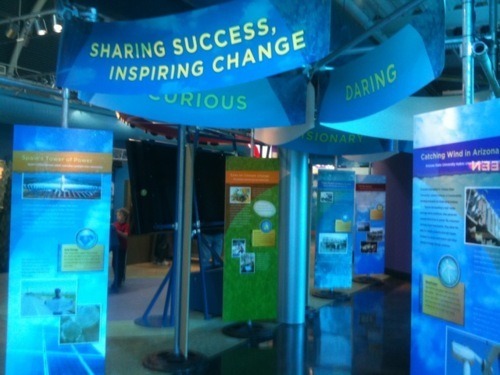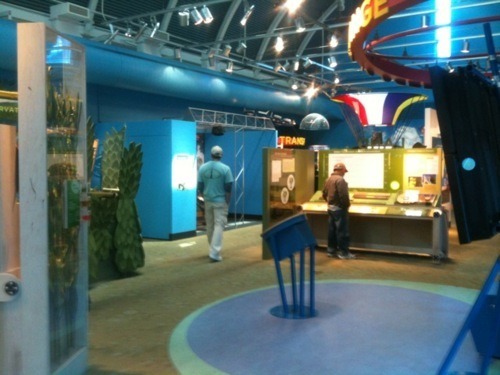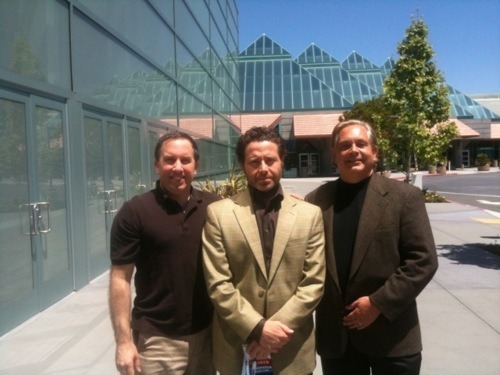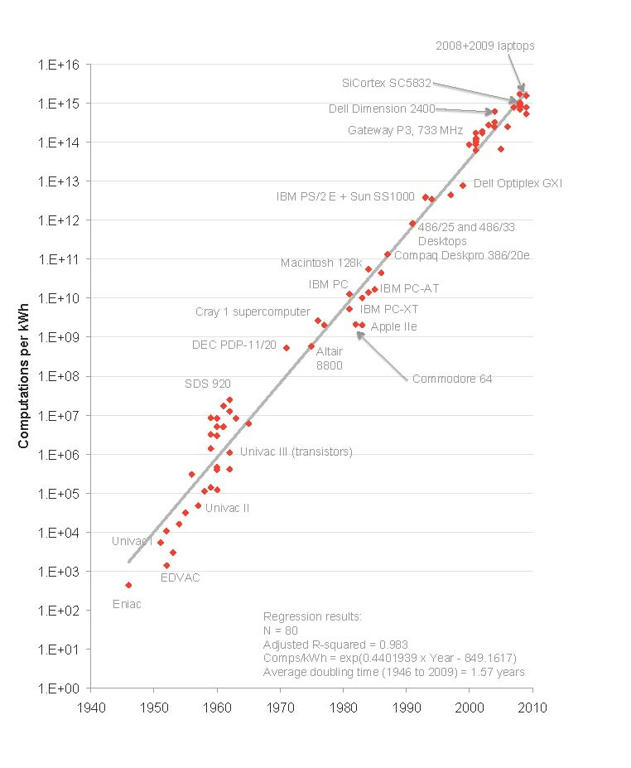More thoughts on window-integrated PVs
In an earlier post I speculated about window-integrated PV, and have now completed some further investigations.
I emailed with Richard Lunt, the lead researcher on the window integrated PV paper, as well as with my friend Steve Selkowitz, head of LBNL’s Windows and Daylighting Group, about this new innovation, and they agreed it would be OK for me to share some of their thoughts here.
Richard seems to be thinking along the same lines as I am (direct use of the electricity at the window as opposed to distributing it throughout the building). That means you get to cut out some of the balance of system costs for the PVs, which is typically half the installed cost for PV systems, as well as to avoid the costs of the glass and other structural elements that otherwise would contribute to the cost of the PV system.
He added a few more wrinkles:
1) the maximum theoretical efficiency for such cells is 22%, once you eliminate visible light from the solar spectrum. The new cells have efficiencies of just under 2% in their experiments, with the goal of getting to 10%.
2) large buildings in urban environments have very large vertical areas that will intercept significant amounts of solar radiation in the mornings and afternoons, and the IR component is more significant at these times because the scattering of light is more prevalent for the visible spectrum than for IR/UV.
3) a compensating factor is that “these organic solar cells have much better efficiencies at low illumination intensity than traditional inorganic semiconductors”.
It’s clear from his comments that he (wisely) isn’t expecting this to be a silver bullet, but one more solution that could be useful in particular circumstances.
And that brings me to the question of performance vs cost, which Steve Selkowitz brought up first thing. All of my speculations presume that the technology gets to a point where it is cost effective to apply it in the kinds of applications I propose. If that doesn’t happen, then the speculations are moot. But in this case, there are several other paths up the mountain, so the ideas I mention could make sense anyhow.
I visited Steve in his office on Friday, May 6, 2011 and I got an earful about the opportunities (large) and the complexities (significant). The key tradeoffs for electrochromics and window integrated PVs relate to the comparative value of lighting, cooling and power. An electrochromic window in conjunction with dimmable lighting can be a big lighting energy saver (the largest commercial building end use) but its value will be reduced if a significant fraction of the visible sunlight is converted to electric power at the window. Selkowitz points out that daylighting a room with an electrochromic window or skylight uses solar energy at 3 – 10 times the efficiency of the sunlight-to-PV-electricity-to-electric lighting pathway.
There are a few other issues the manufacturers are working out as well. For example the time it takes for some electrochromic technologies to switch between transparent and opaque is an issue that I hadn’t considered (some switch very rapidly, others take seconds to minutes). And some electrochromics may require application of a very small constant voltage to maintain their optical state, while others are more like a flip-flop (the electronic kind, not the beachware kind) in that once they reach a state they stay there without additional effort or electricity. Finally, there are new thermochromic glazings that respond to temperature instead of voltage, which is a whole different kettle of fish.
He also pointed out a few other issues with my earlier post:
1) Self powered skylight shades already exist. Velux has a skylight with a motorized shade that uses ordinary PVs on the frame of the shade to power itself (I haven’t found this online yet but will post a link here when I do). In any case, such installations need batteries in case you want the skylight to operate at night, but this cost can be offset by not having to run wires to the skylight.
2) For cars, ventilation is a good thing, but it’s a complex design space because you’ll also want aggressive use of UV/IR blocking coatings that would need to be applied in addition to the PV coating, and the details of how to do that in practice haven’t been fully worked out yet as cost effective solutions.
3) The expected lifetime of these coatings as well as efficiency degradation over time are both real issues that the technology folks are addressing.
4) Finally, electrochromic glazings now retail for roughly an additional $50/sf, and adding another expensive layer to such windows is going to raise costs further and make rapid penetration that much more difficult.
Selkowitz’s team at LBNL has been developing and promoting electrochromic windows for over 20 years and he thinks he can now see the daylight at the end of the electrochromic tunnel. But he thinks the early markets will do better focusing on the electrochromic elements alone, adding PV later once both technologies are better established.
Bottom line, if we can make window integrated PVs with low cost, high reliability, and long lifetime, there will be niches where they will be important. I’ll post more as I learn more.







